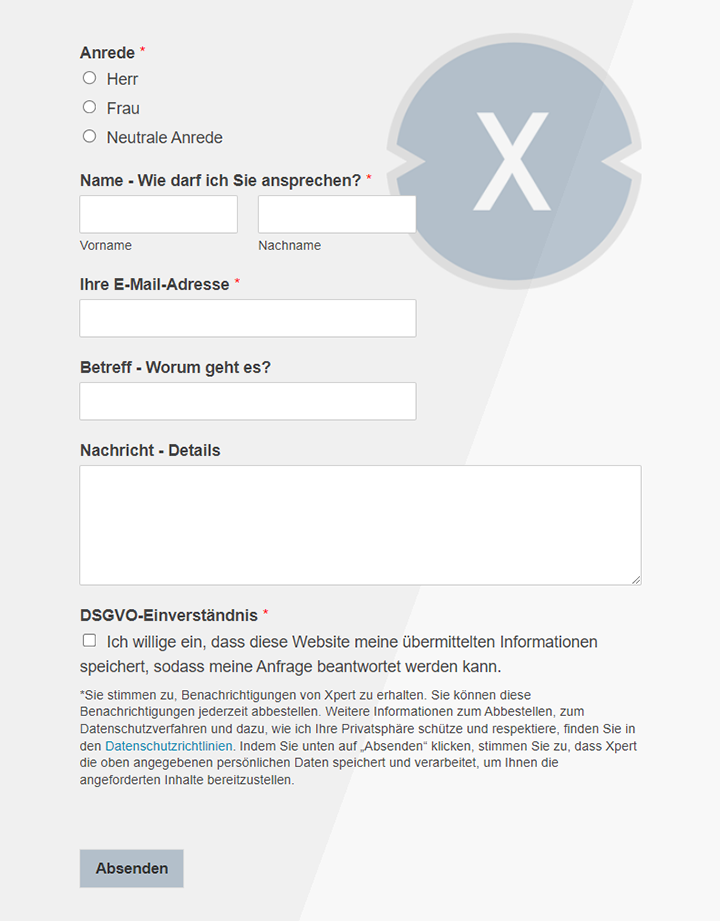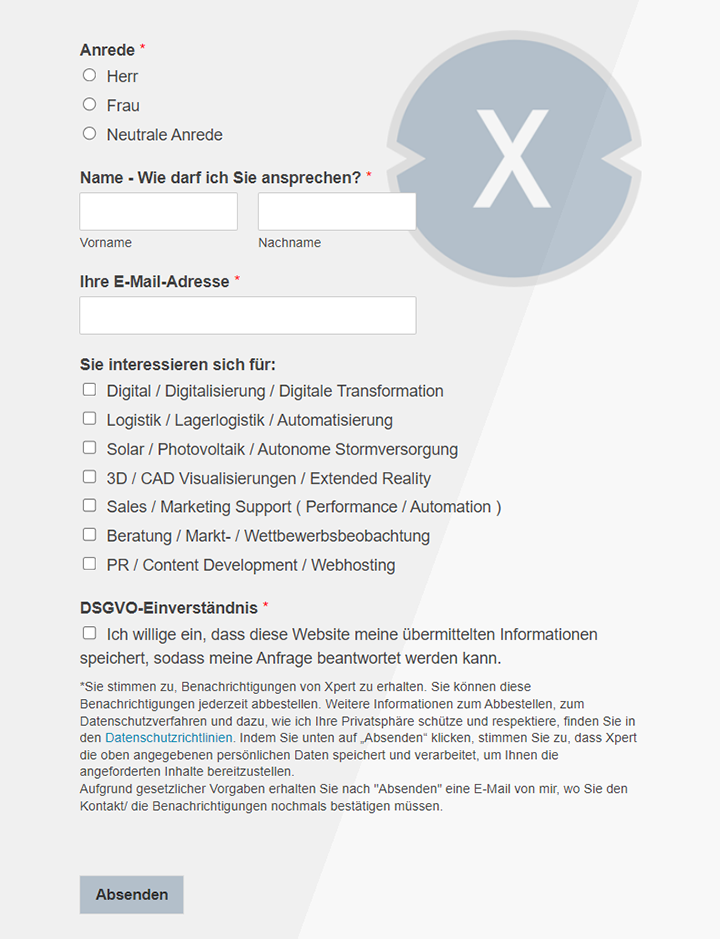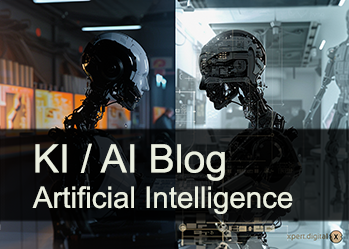The next level of artificial intelligence: Autonomous AI agents are conquering the digital world – AI agents versus AI models
Xpert pre-release
Language selection 📢
Published on: January 10, 2025 / Update from: January 10, 2025 - Author: Konrad Wolfenstein

The next evolutionary stage of artificial intelligence: Autonomous AI agents conquer the digital world - agents versus models - Image: Xpert.Digital
🤖🚀 The rapid development of artificial intelligence
🌟 The rapid development of artificial intelligence (AI) in recent years has led to impressive advances in areas such as image recognition, language processing and content generation. But the future of AI goes far beyond isolated models trained for specific tasks. We are at the beginning of a new era in which intelligent systems are able to think, act and interact with their environment independently: the era of AI agents.
🧑🍳🏗️ The chef as a metaphor for cognitive architectures
Imagine an experienced chef in a busy restaurant kitchen. His goal is to create exquisite dishes for guests. This process involves a complex sequence of planning, execution and adaptation. He records information - guests' orders, the available ingredients in the pantry and refrigerator. He then considers which dishes he can prepare with the available resources and his knowledge. Finally he gets into action, cutting vegetables, seasoning dishes and frying meat. He makes adjustments throughout the process, tweaking his plans when ingredients run low or he receives feedback from guests. The results of his previous actions inform his future decisions. This cycle of information intake, planning, execution, and adaptation describes a unique cognitive architecture that the chef applies to achieve his goal.
🛠️🤔 How AI agents think and act
Just like this chef, AI agents can use cognitive architectures to achieve their goals. They iteratively process information, make informed decisions, and optimize their next steps based on previous results. At the heart of these cognitive architectures is a layer responsible for managing memory, state, reasoning, and planning. It uses advanced prompting techniques and related frameworks to guide reasoning and planning, enabling the agent to more effectively interact with its environment and complete complex tasks.
Suitable for:
📊⚙️ Differences between traditional AI models and AI agents
The distinction between simple AI models and these advanced agents is crucial. Traditional models are limited to the knowledge contained in their training data. They make individual conclusions or predictions based on the user's immediate query. Unless explicitly implemented, they do not maintain session history or continuous context, such as chat history. They also lack the ability to interact natively with external systems or execute complex logical processes. Although users can guide the models to make more complex predictions through clever prompts and the use of reasoning frameworks (such as Chain-of-Thought or ReAct), the actual cognitive architecture is not inherently anchored in the model.
In contrast, AI agents have an extended range of knowledge that is achieved by connecting with external systems via so-called “tools”. They manage the session history to enable multi -stage conclusions and predictions based on user inquiries and decisions in the orchestration layer. A “train” or an interaction is defined as an exchange between the interacting system and the agent. The integration of tools is an integral part of the agent architecture, and they use native cognitive architectures that use the Reasoning frameworks or prefabricated agent frameworks.
🛠️🌐 Tools: The bridge to the real world
These tools are key to how agents interact with the outside world. While traditional language models are excellent at processing information, they lack the ability to directly perceive or influence the real world. This limits their usefulness in situations that require interaction with external systems or data. You could say that a language model is only as good as what it has learned from its training data. No matter how much data is fed into a model, it lacks the basic ability to interact with the outside world. Tools close this gap and enable real-time, contextual interactions with external systems.
🛠️📡 Extensions: Standardized bridges to APIs
There are different types of tools available to AI agents. Extensions provide a standardized bridge between an API and an agent, allowing APIs to run seamlessly regardless of their underlying implementation. Imagine developing an agent to help users book flights. You want to use the Google Flights API, but you're not sure how the agent should make requests to this API endpoint. One approach would be to implement custom code that parses the user request and calls the API. However, this is error prone and difficult to scale. A more robust solution is to use an extension. An extension uses examples to teach the agent how to use the API endpoint and what arguments or parameters are required for a successful call. The agent can then decide at runtime which extension is best suited to solving the user query.
💻📑 Features: Structured tasks and reusability
Functions are similar in concept to functions in software development. They are self-contained code modules that perform a specific task and can be reused when necessary. In the context of agents, a model can choose from a set of known functions and decide when to call which function with which arguments. However, unlike extensions, a model does not make a direct API call when using functions. Execution occurs on the client side, giving developers more control over data flow in the application. This is particularly useful when API calls must occur outside of the direct agent architecture flow, security or authentication restrictions prevent direct calls, or time or operational constraints make real-time execution impossible. Functions are also great for formatting the output of the model in a structured format (like JSON), which makes it easier for other systems to further process it.
🧠📚 The problem of static knowledge and the solution through data stores
Data stores address the limitations of static knowledge of language models. Think of a language model as a huge library of books containing its training data. In contrast to a real library, which constantly adds new volumes, this knowledge remains static.
Data stores allow agents to access more dynamic and timely information. Developers can provide additional data in its native format, eliminating time-consuming data transformations, model retraining, or fine-tuning. The data store converts the incoming documents into vector embeddings that the agent can use to extract the information it needs.
A typical example of the use of data stores is Retrieval Augmented Generation (RAG), where the agent can access a variety of data formats including website content, structured data (PDFs, Word documents, CSV files, spreadsheets) and unstructured data (HTML, PDF, TXT). The process involves generating embeds for the user request, comparing these embeds with the content of the vector database, retrieving the relevant content, and passing it to the agent to formulate a response or action.
🎯🛠️ Tool usage and learning approaches for agents
The quality of an agent's responses depends directly on his or her ability to understand and perform these various tasks, including selecting the right tools and using them effectively. In order to improve a model's ability to select the appropriate tools, various targeted learning approaches exist:
1. In-Context Learning
Prompted a generalized model with a prompt, tools and a few examples, which means that it can learn “on the fly” how and when these tools are used for a specific task. The react framework is an example of this approach.
2. Retrieval-Based In-Context Learning
Goes one step further and dynamically populates the model prompt with the most relevant information, tools, and related examples retrieved from external storage.
3. Fine-Tuning Based Learning
Involves training a model with a larger data set of specific examples before inference. This helps the model understand when and how to apply certain tools before it even receives user requests.
The combination of these learning approaches enables robust and adaptable solutions.
🤖🔧 AI agent development and open source solutions
The practical implementation of AI agents can be significantly simplified by libraries such as Langchain and Langgraph. These open source libraries enable developers to create complex agents by "chaining" sequences of logic, reasoning and tool calls.
For example, using the SerpAPI (for Google Search) and the Google Places API, an agent can respond to a user's multi-step query by first finding information about a specific event and then finding the address of the associated place.
🌐⚙️ Production and platforms for AI agents
For production application development, platforms like Google's Vertex AI provide a fully managed environment that provides all the essential elements for agent creation. Using a natural language interface, developers can quickly define critical elements of their agents, including goals, task instructions, tools, and examples.
The platform also provides development tools for testing, evaluating, measuring performance, debugging, and improving the overall quality of developed agents. This allows developers to focus on building and refining their agents while the complexity of infrastructure, deployment and maintenance is handled by the platform.
🌌🚀 Future of AI agents: agent chaining and iterative learning
The future of AI agents harbors immense potential. With the further development of tools and the improvement of the reasoning skills, agents will be able to solve increasingly complex problems. A strategic approach that ** ”agent chaining” **, in which specialized agents - each expert in a certain area or a specific task - are combined will continue to gain in importance and enable outstanding results in various industries and problem areas.
It is important to emphasize that developing complex agent architectures requires an iterative approach. Experimentation and refinement are key to finding solutions to specific business requirements and organizational needs.
Although no two agents are identical due to the generative nature of the underlying models, by leveraging the strengths of these fundamental components we can create powerful applications that extend the capabilities of language models and add real value. AI's journey from passive models to active, intelligent agents has just begun, and the possibilities seem limitless.
Our recommendation: 🌍 Limitless reach 🔗 Networked 🌐 Multilingual 💪 Strong sales: 💡 Authentic with strategy 🚀 Innovation meets 🧠 Intuition
At a time when a company's digital presence determines its success, the challenge is how to make this presence authentic, individual and far-reaching. Xpert.Digital offers an innovative solution that positions itself as an intersection between an industry hub, a blog and a brand ambassador. It combines the advantages of communication and sales channels in a single platform and enables publication in 18 different languages. The cooperation with partner portals and the possibility of publishing articles on Google News and a press distribution list with around 8,000 journalists and readers maximize the reach and visibility of the content. This represents an essential factor in external sales & marketing (SMarketing).
More about it here:
🌟 Short version: Advanced agent technologies in artificial intelligence
⚙️ The development of artificial intelligence (AI) has experienced a remarkable dynamic in recent years. In particular, the conception of “agents” has made a new level of interaction and problem solving. Agents are more than just models; They are autonomous systems that pursue goals by interacting with the world, processing information and making decisions. In the following, the concept is analyzed by agents and supplemented with innovative approaches to increase performance.
🚀 What is an agent?
An agent can be defined as a software application that attempts to achieve a goal through observation and interaction with its environment. Unlike traditional models that simply respond to requests, agents are able to act proactively and independently decide how to achieve their goal.
✨ Core components of an agent
- The model: The central element of an agent is the language model, which acts as a decision maker. This model can be general in nature or tailored specifically to specific use cases.
- The tools: Tools extend the capabilities of the model by providing access to external data sources or functions. Examples are API integrations or databases.
- The orchestration layer: This layer controls how the agent collects information, processes information, and performs actions. It forms the agent's “brain,” integrating logic, memory and decision-making.
🧠 Agents versus models
A fundamental difference between agents and simple models lies in the way they handle information:
- Models: Limited to inference-based answers and only use training data.
- Agents: Leverage tools to obtain real-time information and perform advanced tasks such as multi-turn interactions.
🔧 Extended functionalities through tools
🌐 Extensions
Extensions are interfaces between APIs and agents. They allow the agent to make API calls without the need for complex custom code.
⚙️ Features
Unlike extensions, functions are executed on the client side. These provide developers with control over data flow and enable the implementation of specific logic.
📊 Databases
By integrating vector databases, agents can dynamically access structured and unstructured data to provide more precise and contextual answers.
📈 Increasing performance through targeted learning
To increase the efficiency of agents, there are various learning methods:
- In-context learning: Enables models to learn and apply tools and examples directly during inference time.
- Retrieval-based in-context learning: Combines dynamic data retrieval with the model to access contextual information.
- Fine-tuning: The model is optimized for specific tasks through targeted data additions.
🔮 Future potential of agents
The development of agents goes far beyond previous applications. In the future, agents could be game-changers in the following areas:
- Healthcare: Agents could provide personalized diagnoses and treatment plans.
- Education: Dynamic learning platforms could be realized through agents that respond to the needs of each student.
- Economy: Automated processes and decision-making could be revolutionized in companies through the use of agents.
🏁 Agents represent a revolutionary advance in AI
Agents represent a revolutionary advance in AI by combining models with tools, logic and decision-making capabilities. The possibilities they offer are almost limitless, and their importance will continue to grow in a world increasingly dependent on data and automation.
We are there for you - advice - planning - implementation - project management
☑️ SME support in strategy, consulting, planning and implementation
☑️ Creation or realignment of the digital strategy and digitalization
☑️ Expansion and optimization of international sales processes
☑️ Global & Digital B2B trading platforms
☑️ Pioneer Business Development
I would be happy to serve as your personal advisor.
You can contact me by filling out the contact form below or simply call me on +49 89 89 674 804 (Munich) .
I'm looking forward to our joint project.
Xpert.Digital - Konrad Wolfenstein
Xpert.Digital is a hub for industry with a focus on digitalization, mechanical engineering, logistics/intralogistics and photovoltaics.
With our 360° business development solution, we support well-known companies from new business to after sales.
Market intelligence, smarketing, marketing automation, content development, PR, mail campaigns, personalized social media and lead nurturing are part of our digital tools.
You can find out more at: www.xpert.digital - www.xpert.solar - www.xpert.plus
























